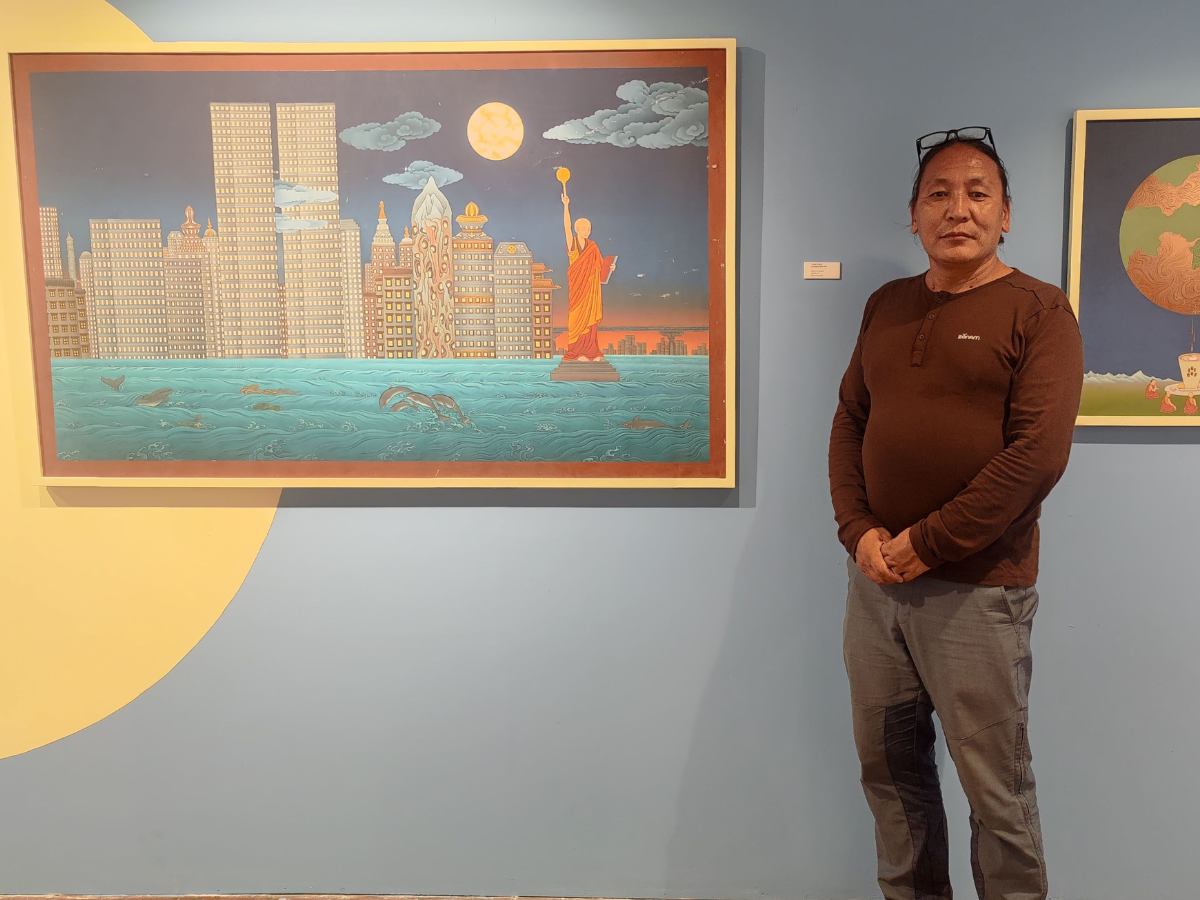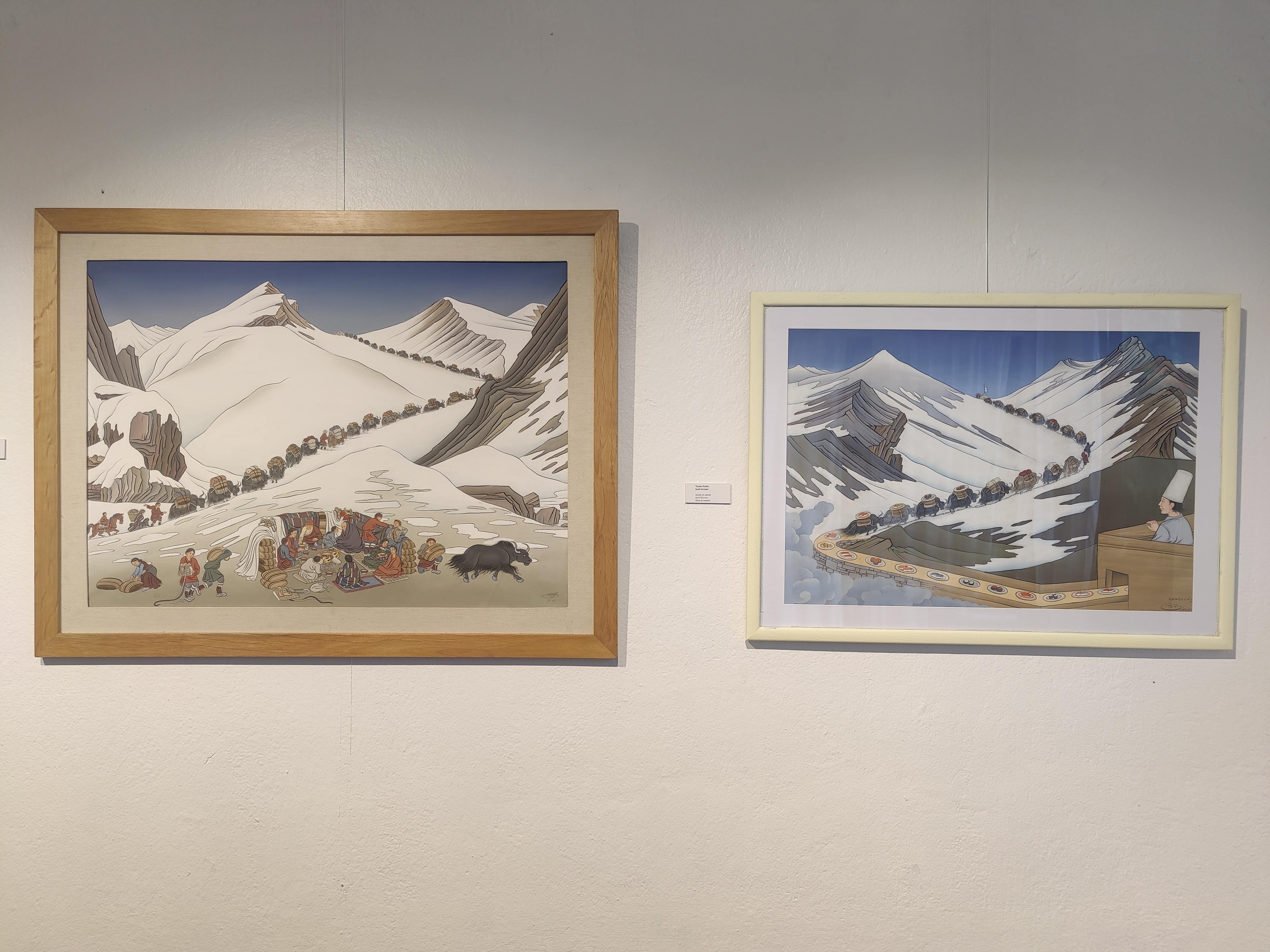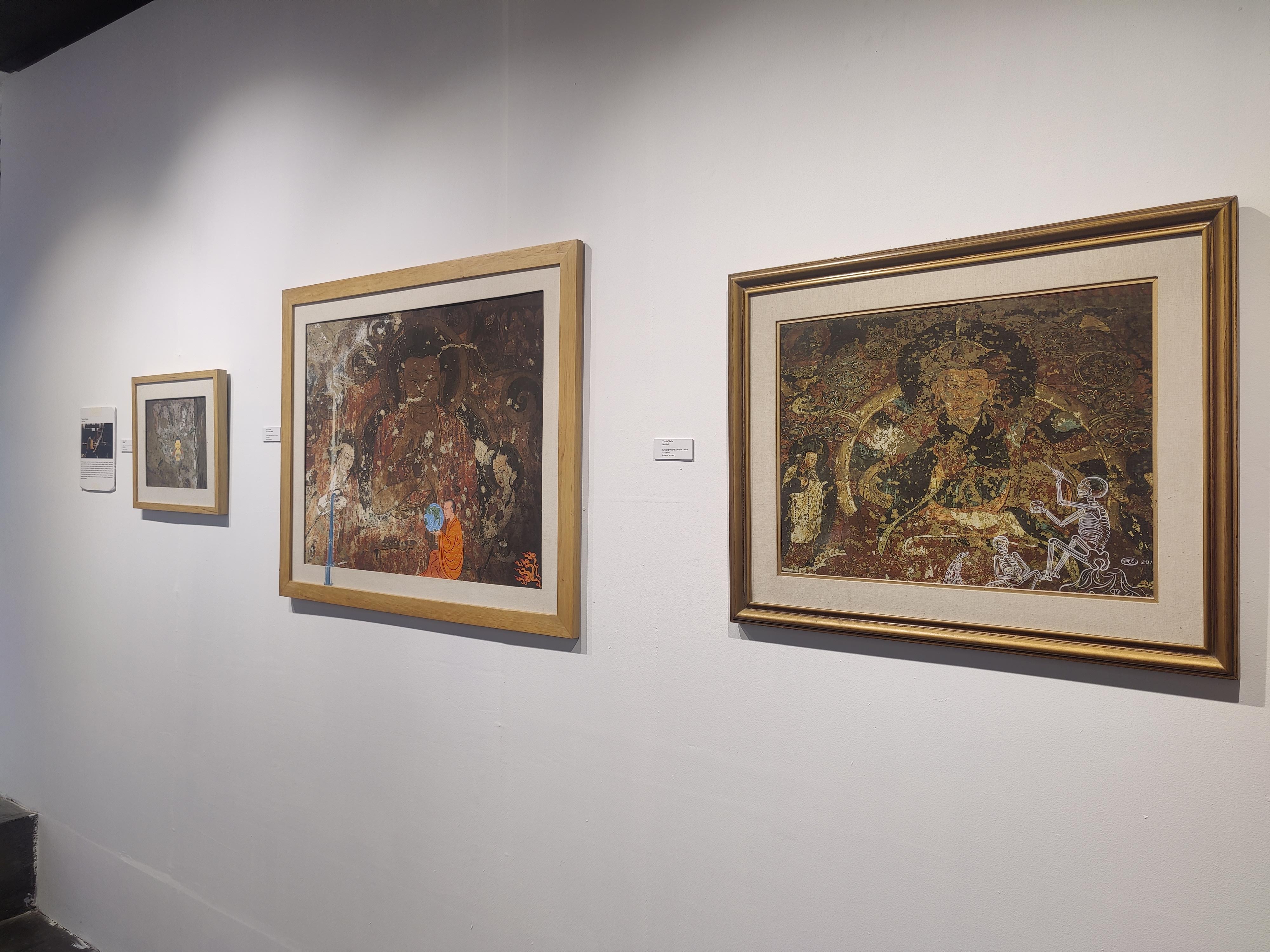Arts

Not all Himalayans are mountaineers. Some, like Tenzin Norbu, are painters.
Inspired by the famous tradition of thangka painting, done by Himalayan Buddhists, Tenzin started painting young. He learnt it from his father, who was also a traditional thangka painter, while they resided in the Himalayan range of Dolpo.
“I opened my eyes and I was born in the art family,” Norbu told NepalMinute.
He moved to Kathmandu in the early 1990s and experienced a big culture change. He was exposed to a life outside the mountains that was dominated by cars and aeroplanes.
“It was the first time I saw a tree because we have no trees in Dolpo,” he added.
But this was just the start for him.
“Journey of a Nomadic Traveler”, an exhibition currently on display at Windhorse Gallery, is the life story of Tenzin Norbu narrated through his acrylic-painted canvasses. Curated by Ujen Norbu Gurung, the exhibition has been divided into three sections: Norbu’s life amidst the Himalayas; his perception of life; and his vision for the future.
This is his second exhibition in Kathmandu. The first was held 20 years ago at Shangri-La Hotel which displayed 25 smaller artworks. He had sold 20 pieces in two weeks.
Two common aspects float throughout the pieces in this current exhibition: blue sky and moon.
The blue was is inspired by a Japanese artist named Hokusai, who used indigo colours in his paintings. The second inspiration is from the Dolpo sky that was blue and clear when Norbu was living there.
On the other hand, the moon has a deeper connection. For the first 10 years of his life, Norbu’s village did not have any electricity. Therefore, the full moon night was a happy moment for everyone. “We would go outside in the night, and sing and play,” he said.
His life

The first leg of the exhibition displayed on the left-hand side white wall of the gallery is a voyage into Norbu’s life in Dolpo.
The two notable pieces are situated at the end of the wall, which is also the recommended starting point for visitors.
The first painting titled ‘Sushi Caravan’ is inspired by his travels to Japan. During his visit, he ate at a restaurant where sushi was moving around on a small train and patrons had to pick the food from it. He immediately made a sketch and mixed it with aspects from his life in Dolpo.
Looking closely, you can see that the sushi starts from a building and is soon led on the backs of the animals that form caravans leading it to the mountains.
“The idea is that the dead fishes come alive,” he said.
This is also a lesson from Buddhism that tells people not only to care about humanity but everything else too, according to him.
The painting, located next to the ‘Sushi Caravan’, shows how Norbu and his family lived and travelled in Dolpo with other paintings narrating a similar story.
His perception
1663382601.png)
The second part is exhibited on the blue right-hand side wall of the gallery. Consisting of six pieces, it has four smaller artworks and two big artworks.
One of the biggest pieces is Norbu’s version of the New York skyline, titled ‘Himalayan New York’, inspired by his travels to the US city.
Norbu has added his Dolpo heritage at various places in the artwork that require closer inspection. For example, the top of one building on the extreme left side of the painting has been reconstructed in the shape of houses in his village.
However, the noticeable change is that he has replaced the Statue of Liberty with a monk holding a light. Talking about his reasons, he said, “In the head [of the Statue of Liberty] they put some crown, which I feel is not so peaceful. So, I put this monk.”
This piece is also Ujen Norbu's favourite in the collection. He knew the painting had to be centre of the exhibition when he saw it for the first time.
“I feel it is very local but also very international,” he told NepalMinute.
One of the smaller pieces in this section is titled “Nest of Buddhism”. Norbu’s village name is Bentsang – where ‘bent’ means Buddhism and ‘sang’ means nest. Therefore, the piece shows a nest on top of a tree.
Norbu also has put three monks sitting in the nest. “There are three villages so I put three monks,” he said.
His vision

The last leg of the exhibition, located on the right-hand side wall of the gallery is Norbu’s contribution and vision of his life and future.
He found the three paintings in his village in Dolpo. After photographing them, he added his touch to it like one side has water flowing, while the other shows a monk holding an Earth and more.
“I wanted to keep this in good condition and preserve it. This is my message for people who like art and culture,” he said.
‘Journey of a Nomadic Traveller’ will be on display till October 9 at Windhorse Gallery, Lalitpur.






